Iguana: A Closer Look at One of Nature’s Most Iconic Reptiles
The iguana is a fascinating reptile in the animal kingdom. It earns both respect and interest. Iguanas have a long history and come in many shapes and colors. They live in different ecosystems. Some are found in the sunny deserts of North America. Others sit along the rugged shores of the Galápagos Islands. This article explores iguanas. It covers their evolution, behavior, and ecological roles. It also looks at their complex relationship with humans.
Table of Contents
Iguana: A Closer Look at One of Nature’s Most Iconic Reptiles
The iguana is a fascinating reptile in the animal kingdom. It earns both respect and interest. Iguanas have a long history and come in many shapes and colors. They live in different ecosystems. Some are found in the sunny deserts of North America. Others sit along the rugged shores of the Galápagos Islands. This article explores iguanas. It covers their evolution, behavior, and ecological roles. It also looks at their complex relationship with humans.
Table of Contents
- Scientific Classification
- Description / Physical Description
- Range & Distribution
- Habitat
- Diet
- Behaviour / Lifestyle
- Lifespan
- Adaptations
- Mating & Reproduction / Reproduction & Lifecycle
- Predators
- Conservation Status
- Interesting Facts
- As Pets
- Classification of Species
- Subspecies
Scientific Classification
- Kingdom: Animalia
- Phylum: Chordata
- Class: Reptilia
- Order: Squamata
- Suborder: Iguania
- Family: Iguanidae
- Genus: Iguana
Description / Physical Description
Iguanas are large, herbivorous lizards that really stand out. They boast sturdy bodies, long tails, and distinctive dewlaps—those flaps of skin hanging beneath their throats. Dewlaps play a crucial role in helping iguanas cool off and communicate with one another. The green iguana (Iguana iguana) is probably the most well-known of the bunch, flaunting vibrant green hues and spines that run along its back and tail.
Some iguana species have developed some truly remarkable color variations:
Blue iguanas (Cyclura lewisi) shine with a dusty cobalt shade, especially during mating season.
Red iguanas, often seen as a color variant of the green iguana, sport a striking crimson glow.
Desert iguanas (Dipsosaurus dorsalis) are dressed in light, sandy tones that reflect sunlight, helping them thrive in arid environments.
Then there’s the marine iguana (Amblyrhynchus cristatus), the only lizard that calls the ocean home. Its dark coloration allows it to absorb heat after a chilly swim in the Pacific.
Interestingly, baby iguanas tend to be more vibrant than their adult counterparts, showcasing clearer patterns and lighter shades.
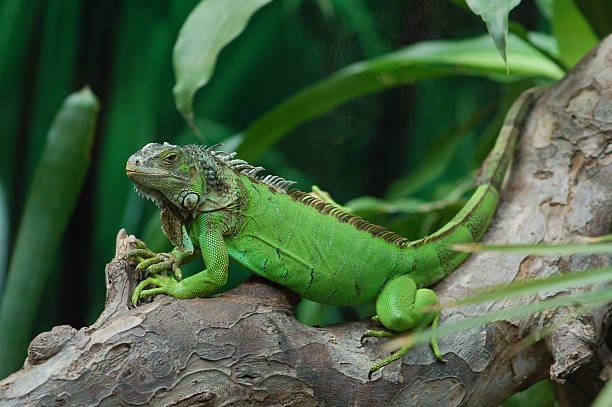
Range & Distribution
Iguanas are originally from Central and South America, the Caribbean, and some areas in the Pacific. Here’s a quick look at their range:
– Green iguanas: Found from southern Mexico all the way to Brazil and the Caribbean.
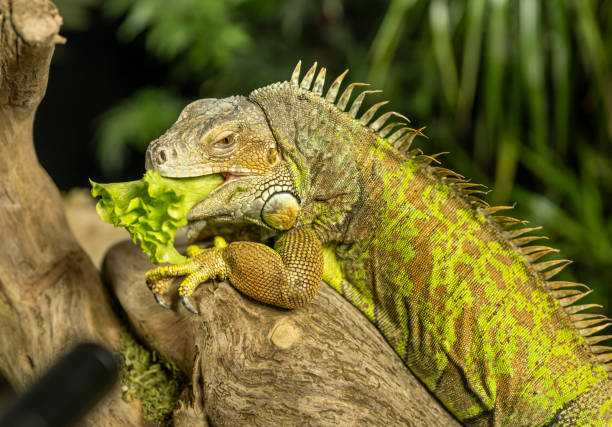
– Blue iguanas: Only found on Grand Cayman.
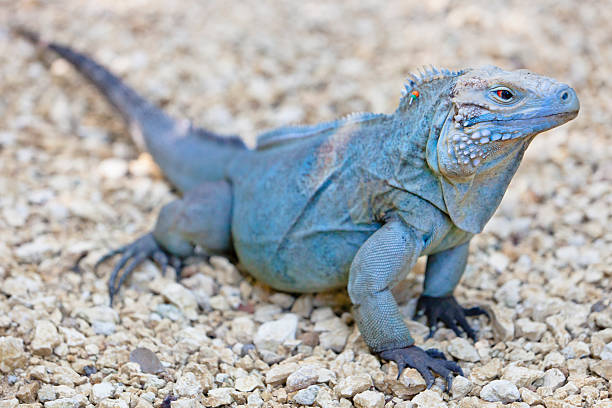
– Marine iguanas: Unique to the Galápagos Islands.
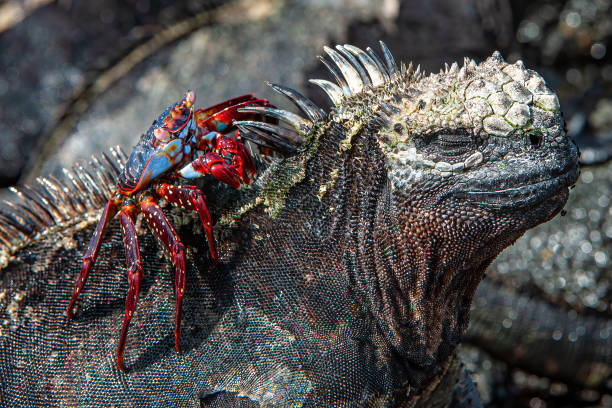
– Desert iguanas: Located in the southwestern United States and northwestern Mexico.
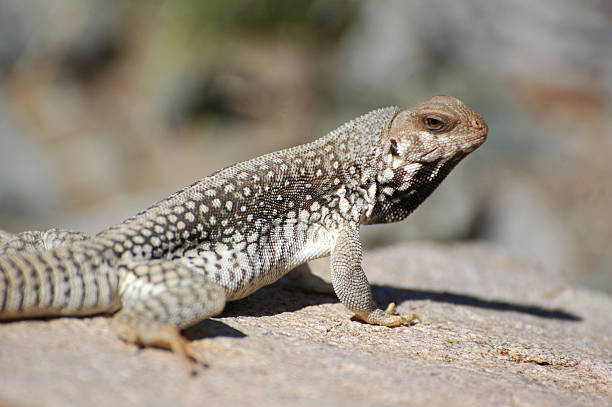
– Rhino iguanas (Cyclura cornuta): Native to Hispaniola.
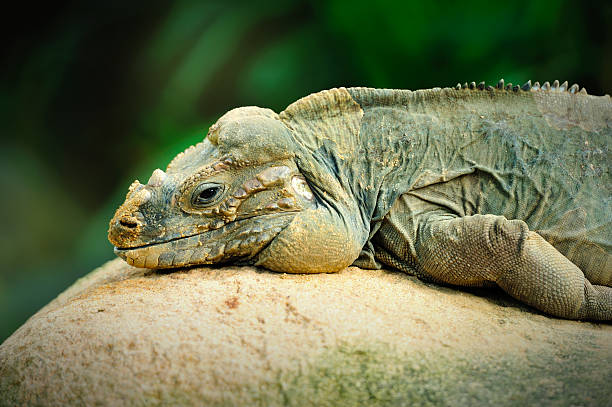
In Florida, there’s a growing population of iguanas, primarily green iguanas. This situation arose due to the exotic pet trade and people releasing their pets into the wild.
Habitat
Iguanas are quite versatile when it comes to their habitats, each species adapting to its own unique environment.
Take green iguanas, for instance; they absolutely thrive in tropical rainforests, often found lounging high up in the trees close to water sources.
Desert iguanas, on the other hand, are perfectly at home in dry, sandy scrublands.
Then there are marine iguanas, who love to bask on volcanic rocks and take refreshing dives into coastal waters to munch on algae.
Blue and rhino iguanas prefer rocky landscapes, dry forests, and shrublands for their homes.
Interestingly, some iguana species are quite territorial, forming strong attachments to their favorite basking spots and feeding areas.

Diet
When it comes to diet, most iguanas are mainly herbivores, munching on a variety of leaves, fruits, flowers, and tender shoots.
Green iguanas, in particular, enjoy a wide range of plants, with a special fondness for leafy greens and vibrant flowers.
On the other hand, marine iguanas have a unique diet that consists of algae, which they scrape off underwater rocks using their short, blunt snouts.
Desert iguanas, meanwhile, feast on creosote bush leaves, cactus flowers, and whatever seasonal vegetation they can find.
Interestingly, most iguana species don’t often eat insects or eggs; when they do, it’s more of a rare occurrence than a regular part of their diet.
Behaviour / Lifestyle
Iguanas are typically active during the day, and they’re ectothermic, which means they depend on external heat sources to keep their body temperature in check. One of their essential daily routines is basking in the sun.
Marine iguanas often gather in large groups on sunlit rocks after a good foraging session.
Green iguanas are semi-arboreal creatures and are fantastic swimmers.
On the other hand, rhino iguanas prefer to stay on the ground and are known for being solitary and territorial.
When it comes to their behavior, they exhibit displays like head bobbing, extending their dewlap, and whipping their tails. These actions serve to ward off competitors or attract potential mates.
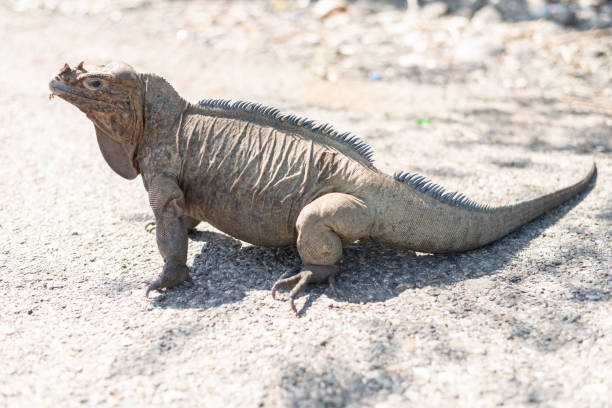
Lifespan
In the wild, iguanas typically live between 10 to 20 years. But with proper care, those kept in captivity can thrive for over 25 years.
Green iguanas can live up to 20 years if conditions are just right.
On the other hand, blue iguanas have an impressive lifespan, often exceeding 30 years, making them some of the longest-living lizards out there.
Their lifespan is heavily influenced by factors like predation, the quality of their habitat, and their access to food and warmth.
Adaptations
Iguanas are marvels of evolutionary engineering. Key adaptations include:
- Tail autotomy: The ability to shed the tail when threatened
- Sharp claws and strong limbs: Ideal for climbing and gripping bark or rocks
- Salt glands in marine iguanas: Excrete excess salt after feeding in seawater
- Color morphing: Subtle temperature-regulated shifts in color for thermoregulation and camouflage
- Iguanas have enhanced vision. They can see ultraviolet light. This ability helps them spot ripe leaves and communicate using color signals.
Mating & Reproduction / Reproduction & Lifecycle
When it comes to iguana reproduction, it’s usually a seasonal affair, and they lay eggs instead of giving live birth. Male iguanas often engage in battles and put on displays to earn their chance to mate.
Once mating is done, the females get busy digging burrows where they can lay anywhere from leathery eggs, depending on their species and size.
The eggs take about days to incubate, with the duration often swayed by the temperature and humidity of the soil.
When baby iguanas finally hatch, they’re ready to fend for themselves, although they do face threats from various predators.
Marine iguanas, on the other hand, like to nest in groups on sandy beaches, and the females are quite protective of their nests.
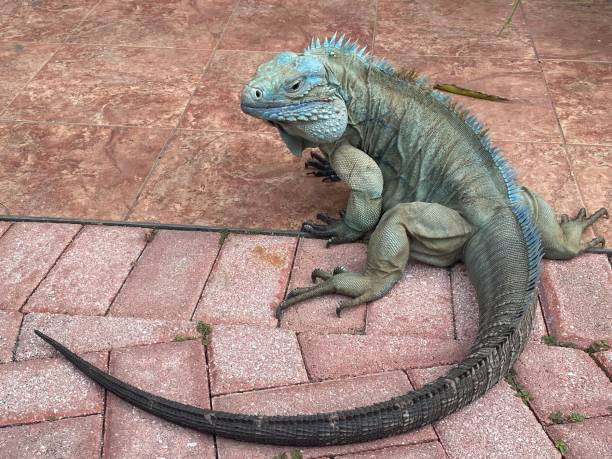
Predators
Iguanas face threats from both natural and introduced predators:
- Native predators: Snakes, birds of prey, and carnivorous mammals
- Predators like cats, dogs, and rats can harm egg clutches and hatchlings.
Florida iguanas are non-native animals. They have fewer predators here. However, humans try to reduce their numbers because of ecological issues.
Conservation Status
Conservation statuses can really differ from one species to another:
Green iguanas are currently listed as Least Concern, but they’re still battling issues like habitat loss and overexploitation.
Marine iguanas are considered Vulnerable, facing threats from climate change and invasive species.
Blue iguanas are in a tough spot, classified as Critically Endangered, although thanks to some serious conservation efforts, their numbers are starting to bounce back.
Rhino iguanas are also Vulnerable, struggling with habitat destruction and hunting pressures.
In various regions, conservationists are getting creative with community programs. They keep an eye on iguana populations, safeguard nesting sites, and even raise hatchlings in captivity before releasing them back into their natural habitats.
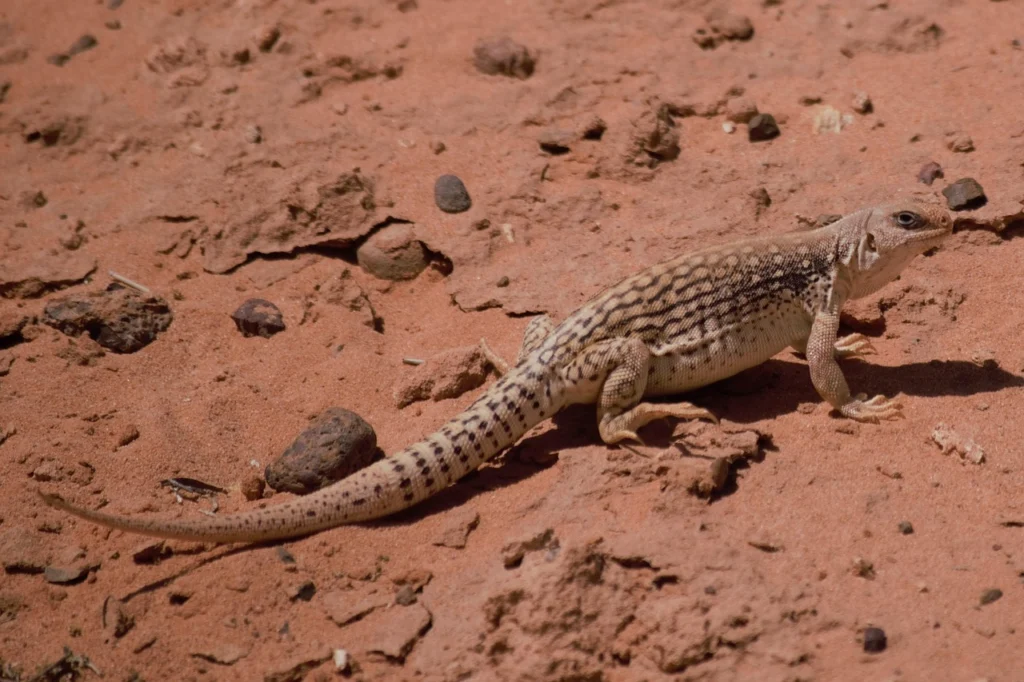
Interesting Facts
- Did you know some fascinating things about marine iguanas? These incredible creatures can dive down over 30 feet and hold their breath for an impressive 40 minutes!
- Their dewlap isn’t just for show; it helps them communicate and also regulates their body temperature.
- Iguanas even have a unique feature called a parietal eye, or a “third eye,” located on the top of their heads. This special eye is sensitive to light and movement, adding to their remarkable adaptations.
- In Tennessee Williams’ play, The Night of the Iguana, the iguana symbolizes feelings of entrapment and the struggle for existence, making it a powerful metaphor.
- And here’s a fun fact: during courtship, blue iguanas become even more vibrant in color, especially when they bask in the sun!
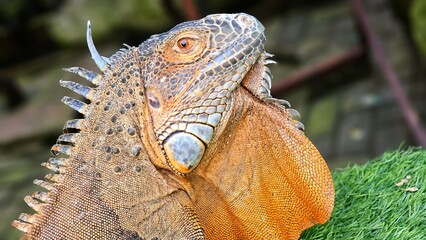
As Pets
Iguanas have become quite the trend as pets, thanks to their striking appearance. But before diving in, potential owners should be aware of a few important challenges:
These reptiles need spacious enclosures, specific UVB lighting, and a carefully curated herbivorous diet to thrive.
If not socialized properly, pet iguanas can develop territorial or aggressive behaviors.
Neglecting their care can lead to serious health issues like metabolic bone disease, kidney failure, and various behavioral problems.
Rehoming iguanas is a significant concern, particularly in Florida, where abandoned iguanas can throw local ecosystems out of balance.
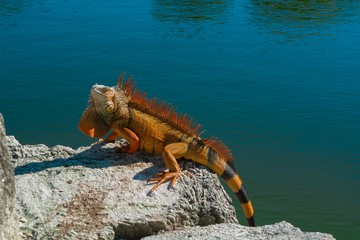
Classification of Species
When it comes to the Iguanidae family, there are more than 45 recognized species! These fascinating creatures are usually grouped into several main genera:
– Iguana (like the Green iguana)
– Cyclura (which includes the Blue iguana and the Rhino iguana)
– Amblyrhynchus (home to the Marine iguana)
– Dipsosaurus (featuring the Desert iguana)
Each of these genera showcases unique evolutionary traits and adaptations to their specific environments.
Subspecies
Green Iguana (Iguana iguana):
I. i. rhinolopha (known for its distinctive facial horns)
I. i. iguana (the nominate subspecies, found in many areas)
Marine Iguana (Amblyrhynchus cristatus):
There are several subspecies that are geographically isolated on various Galápagos islands, including:
A. c. cristatus (found on Fernandina and Isabela)
A. c. venustissimus (native to San Cristóbal)
Blue Iguana (Cyclura lewisi):
This species has no officially recognized subspecies; it’s considered monotypic but is highly specialized.
Rhino Iguana (Cyclura cornuta):
Subspecies include C. c. onchiopsis and C. c. stejnegeri, although there’s still some debate among taxonomists.
Iguanas are a fascinating example of evolution in action. They thrive in rainforests and along volcanic coasts. These lizards are more than just interesting creatures; they play vital roles in their ecosystems and in human culture. They symbolize the beauty of nature and its incredible adaptability.
Iguana Species Table
| Common Name | Scientific Name | Habitat | Geographic Distribution | Conservation Status |
|---|---|---|---|---|
| Green Iguana | Iguana iguana | Tropical rainforests, riverbanks | Central & South America, Caribbean | Least Concern |
| Blue Iguana | Cyclura lewisi | Dry forests, rocky outcrops | Grand Cayman Island | Critically Endangered |
| Red Iguana | Iguana iguana (color morph) | Tropical forests, human-altered zones | Central & South America (captive bred) | Not Evaluated (Color Morph) |
| Marine Iguana | Amblyrhynchus cristatus | Rocky coasts, marine intertidal zones | Galápagos Islands | Vulnerable |
| Desert Iguana | Dipsosaurus dorsalis | Arid deserts, scrublands | Southwestern USA, Northern Mexico | Least Concern |
| Rhino Iguana | Cyclura cornuta | Coastal forests, dry scrublands | Hispaniola (Haiti and the Dominican Rep.) | Vulnerable |
| Fiji Banded Iguana | Brachylophus fasciatus | Tropical forests, mangroves | Fiji Islands | Endangered |
| Lesser Antillean Iguana | Iguana delicatissima | Coastal and dry forests | Lesser Antilles (e.g., Guadeloupe) | Critically Endangered |
| Ctenosaura Iguanas | Ctenosaura spp. | Tropical dry forests, rocky hillsides | Mexico, Central America | Varies by species |
| Bahamas Rock Iguana | Cyclura rileyi | Sandy and rocky coastal zones | Bahamas (island-specific populations) | Critically Endangered |
| Galápagos Iguana (Marine) | Amblyrhynchus cristatus | Rocky shores, lava fields | Galápagos Islands | Vulnerable |

